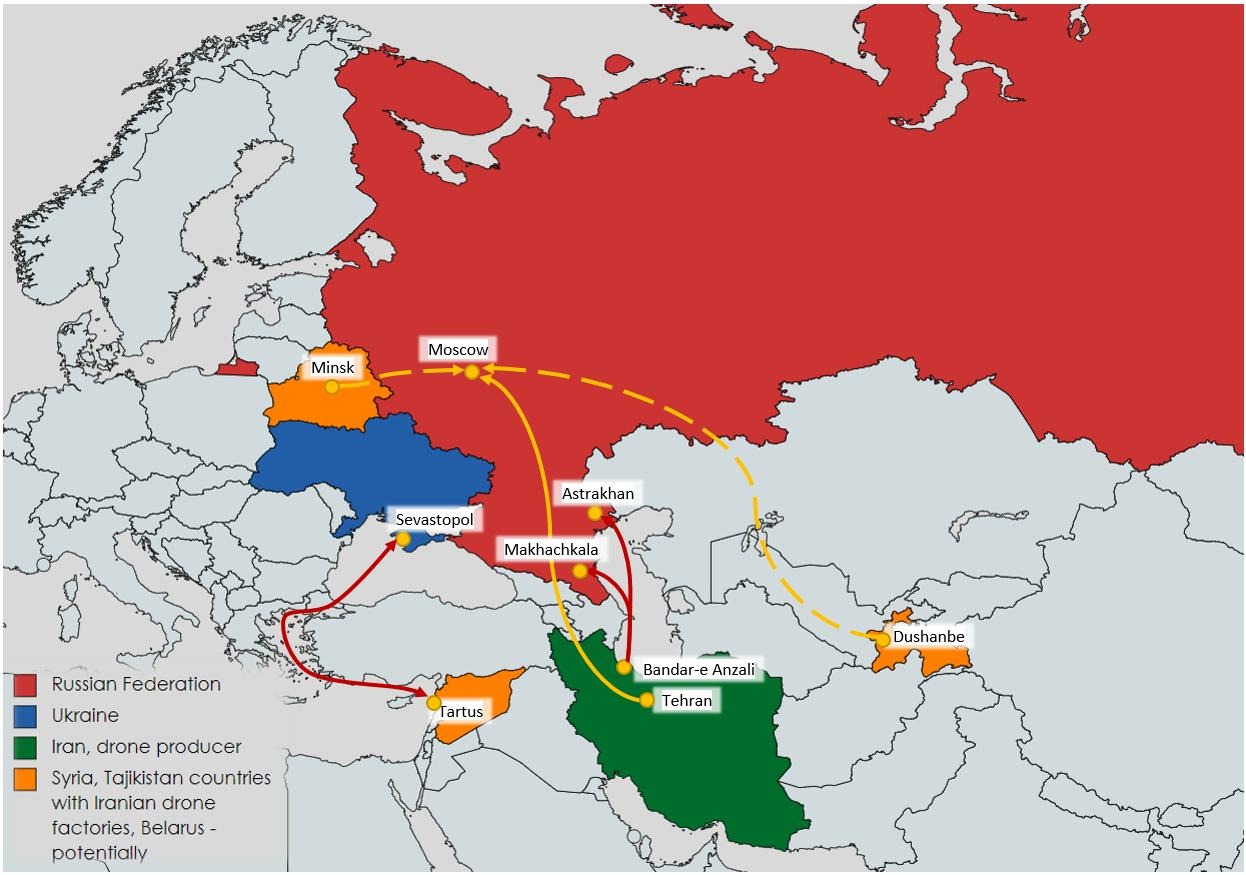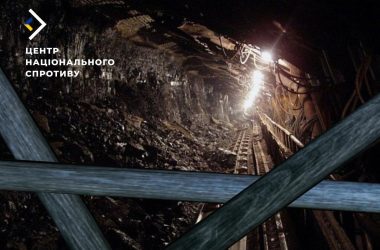Iran continues to supply weapons to the Russian Federation, with which it terrorizes Ukrainian civilian cities. The Center for National Resistance details how two terrorist states organized the logistics of delivering kamikaze drones.
The Russians do not like to admit the low level of equipment of their own army so much that they still do not admit the fact that they are shelling Ukraine with Iranian Shahed-136 drones, calling them “Geranium-2”.
At the same time, the Central Intelligence Agency previously reported that Iranian instructors are present in the temporarily occupied territories and even in Belarus, helping to launch drones onto
Ukrainian cities. In particular, a new group of advisers from Iran recently arrived in the south of Ukraine.
The Russians use kamikaze drones to strike mostly civilian objects, such as an energy complex. Iran gladly fulfills the Kremlin’s order for drones and actively supplies the following models of UAVs: Mohajer, Arash-1 and Arash-2, Shahed-131 and Shahed-136.
The purpose of such strikes is to create a humanitarian disaster, when tens of millions of Ukrainians will sit in the winter without heating, electricity and heating. This, according to Kremlin terrorists, should suppress Ukrainians’ ability to resist and force them to leave for the EU, which will create a new migration crisis.
In this regard, we consider it necessary to identify all those involved in terrorist attacks on Ukrainians. Today we will talk about how exactly Iran supplies weapons to the Russian Federation. There are two ways of transporting drones from the manufacturer to their destinations: air and sea.
Air
The following companies deliver drones and instructors by air:
Iran Air (Iranian state airline controlled by the local Ministry of Infrastructure);
Mahan Air (the founder is the “Nonprofit Institute of Molal Movakhedin”);
Pouya Air (part of the Islamic Revolutionary Guard Corps (IRGC), the military branch of the executive branch of the Islamic Republic of Iran);
Saha Airlines (Part of the Air Force of Iran).
As you can see, we have three state-owned airlines and one supposedly private one. At the same time, state-owned companies are subordinate to the military-political leadership, which, despite public statements, proves full support for the invasion of the Russian Federation by the Iranian authorities.
As for private, it is private only conditionally. The founder of the commercial institute is Hossein Marashi (former vice president of Iran). Since the end of 2011, the company has been on the US sanctions list for providing material and technical support to the IRGC, which in fact controls the airline and uses it for its own purposes.
It should be noted that only Pouya Air made 5 cargo flights on the route Tehran – Moscow from October 12 to 18. It will not be superfluous to mention that the majority of the fleet of cargo planes is made up of Russian IL-76s.

Sea
Iran also uses the sea route through the Caspian Sea to transport drones. According to the documents, the Iranians transport spare parts for civil aviation using the port of Bandar Anzali. The destination is Astrakhan or Makhachkala.
Transportation is carried out by vessels of the Iranian Industrial Company (controlled by IRGC). In particular, at the beginning of November, 200 disassembled drones are expected to arrive in Astrakhan by sea.
It should be noted that the Russians are actively exporting Ukrainian grain by ships to Syria, along the route Sevastopol – Tartus. In the return direction, Iranian drones and their components from the Syrian factory may be transported in containers, although there is currently no confirmation of this.
In particular, in Syria, the Russians can take Iranian surface-to-surface missiles “Zolfaghar”, which are based in Syria. This country also has a factory for the production of the same kamikaze drones.
In general, Iran is currently diversifying its drone production in other countries. In addition to Syria, the plant has been operating in Tajikistan since May. There are also risks of establishing a node assembly in Belarus, because the local “558th aircraft repair plant” in cooperation with the company “Kvand IS” forced the creation of its own “kamikaze drones”, which can be a cover for the use of Iranian developments.
According to preliminary data, Iran can produce up to 150 drones per month. They get the parts from China to bypass sanctions, which allows them not to worry about their shortage. Considering the significant demand of the Russian Federation for UAVs, all the specified production sites and delivery routes will be involved.




